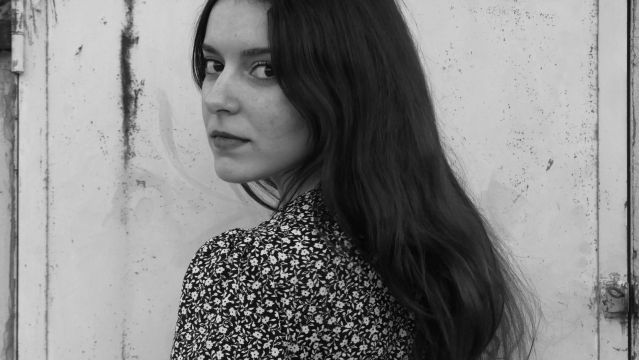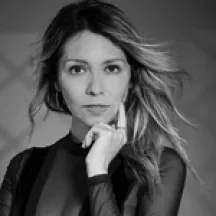Raised in an environment pulsating passion for photography, Moroccan photographer Hind Moumou (@hindbeing) emerges as a distinctive voice. Moumou's perspective of the medium intersects at the realization that, despite our shared connection to a collective consciousness, the art form has an uncanny ability to resonate on a deeply personal level, transforming us into vessels through which it thrives. I had the pleasure of speaking to her on the occasion of our open call, Photography: the Universal Language.
FFU: Thanks so much for taking some time to chat with me. Can you share a bit about your background for everyone and how you developed your skills as a photographer?
HM: With an academic foundation in Philosophy and English studies as well as a professional background in Early Years education, I have consistently engaged in photography. Throughout my studies, I captured the vacant spaces of my university when it became devoid of students, along with natural landscapes and flora surrounding the campus. Simultaneously, as a preschool teacher and pedagogical coordinator, my senses were attuned to the human psyche. I learned to be patient and applied my skills in a cross-disciplinary manner, persisting in what was initially a hobby. When Covid hit, which was a challenging period, it brought with it a silver lining. It allowed me to focus on my digital camera and experiment with its features and various lenses. Thus, I always had a camera on hand, regardless of the circumstances, exploring my surroundings both while traveling and in my home city, Rabat. Whether using my digital camera or phone camera, I aimed to never cease capturing whatever was in my periphery.

FFU: Tell us about the image you created that is linked to our open call. We really loved the feeling you captured in this instant.
HM: The photograph is part of a triptych named The Invisible Hand. Captured in the countryside surrounding the city of Tifelt, the photograph delves into the interplay between free will and the role exterior factors could play in determining one's identity. It's a contemplation that emerged against the backdrop of our existence within a society, a contemplation that persists even outside of the latter. Thus, it illustrates the compelling force to assume a certain role or none, an identity or the lack thereof, within our environment. This serves as a reminder that we humans are not just observers of nature but an integral part of it as well.
FFU: What is it like working as a woman photographer in Morocco?
HM: As a photographer in Morocco, who happens to be a female-identifying person, I have always been encouraged and supported by my community of photographers. I personally have always looked up to and sought advice from individuals across the gender spectrum, whether it be the gender fluid, non-binary, women, and men who are practicing this art form. Within the evolving artistic landscape of Morocco, the thriving nature of the photography industry is increasingly evident and the strong community that surrounds photography in the country serves as a testament to the growing prominence of this visual art. As this network not only fosters collaboration but also contributes to the overall development and recognition of photography as a significant and respected form of artistic expression within the Moroccan cultural context.

FFU: What elements or subjects do you find most compelling to photograph?
HM: I find myself captivated by the relationship between humans and the natural world, especially witnessing how our touch has shaped landscapes and cityscapes over time. From the smallest details of things we create to the grandeur of buildings, subjects such as the human silhouette, and nocturnal landscapes spark my interest, and I am particularly drawn to the charm of abandoned places and especially those in-between liminal spaces. Through them, I can't help but explore 'Le Vide' and try to connect with the heart of the human experience by exploring what stays behind and the emptiness that sometimes wraps around it, alluding to the human's recent presence or permanent absence.
FFU: Can you share details about a project or photo shoot that was particularly memorable or meaningful to you?
HM: One project that holds deep meaning for me is my exploration of liminal spaces across Morocco. Specifically, I've been focusing on areas that lack a clearly defined social or functional purpose, such as empty swimming pools, vacant malls, or hotel hallways. Over the past year, I've dedicated myself to extensive travel, aiming to document these unique characteristics within the context of my country and that to understand the soul of these liminal spaces, capture the physical surroundings and delve into the stories and emotions embedded in them while reflecting the cultural and historical transitions within Morocco.

FFU: Who are some photographers that inspire or influence your work?
HM: Photographers who inspire me include Moroccan artists such as Hiba Dahibi, who specializes in poetic photography with a focus on the study of memory and its various personifications in our surroundings, Meriem Jardioui, who explores monochromatic photography and the study of movement by capturing motion in blur., as well as Youssef Sebti, who vividly and colorfully documents the youth scene in Morocco, producing a colossal body of work that I find highly influential.
FFU: Are there other forms of art or media that influence your approach to photography?
HM: Other forms of art that influence my approach to photography are painting, interior design and architecture as an art form. I usually turn to paintings to have a better grasp on composition, color theory, and nuanced interplay between light and shadow. Interior design as I rely heavily on the choices humans have made in what is it considered to be the 'inside' of a space and how that could influence the emergence and overall aesthetics of places and non-places, as well as architecture, as it plays a substantial role as it constitutes a significant part of the heritage humans leave behind, often transforming into traces that are later abandoned.
FFU: What advice would you give to someone starting their journey in photography, even being young in your career?
HM: Though I see myself as someone still early in their photography journey, and not in a position to give advice, a conversation with such an individual would center on the understanding that each photographer, regardless of experience, is on a unique path. As we are all humans attempting an artistic endeavor with varying faculties, technical abilities, and means, differing from one another in the courage and perseverance to bare one's soul. Photography or any other art form, when done genuinely from the heart and with intentions set in the right place, a person becomes a vessel for an idea, a certain composition, and or a thought-provoking perspective. Thus, letting the art itself guide one into a state of flow can elevate the human spirit, and gratitude for being in that creative flow becomes the ultimate reward, which could encourage one to continue the journey and the practice.






